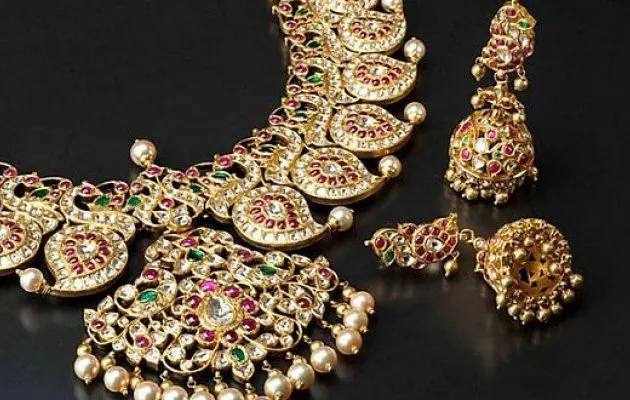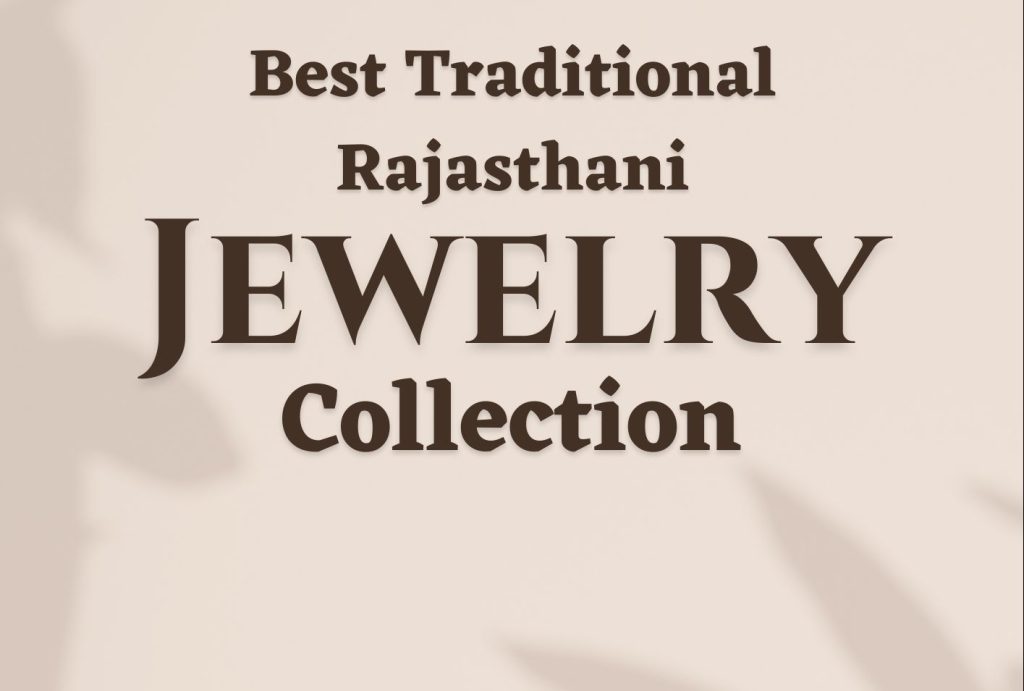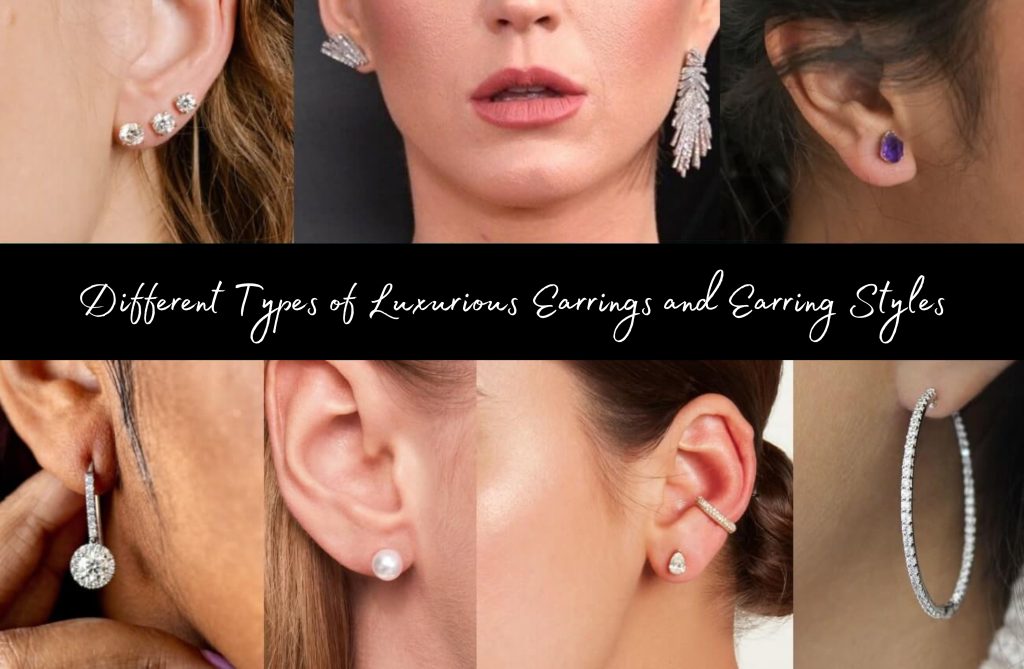Meenakari jewelry, which is frequently referred to as enamelling, is a traditional method of jewelry manufacturing that was first used in India. Fusing coloured glass powders onto a metal surface in order to create elaborate designs gives rise to a one-of-a-kind form of jewelry that is both vibrant and eye-catching. The method has been used for a long time, and it has garnered a lot of attention all across the world in recent centuries.
What is Minakari Jewelry?
The way of putting coloured enamel into decorative engravings or grooves is the core element of the meenakari design style. A vast variety of metals, including brass, copper, silver, and gold, can be used in the creation of meenakari designs.
The jewelry has indentations that imitate popular patterns, animal figurines, or depictions of deities and goddesses. The intention behind this is to give the impression that it is a picture.
The look of the pictures is improved by filling the enamels, which provides stunning clarity to the topic for which the grooves were constructed. This is how the pictures get their three-dimensional effect.
As a result, a wide variety of subjects and occasions can be delicately communicated via the use of meenakari jewelry. One of the reasons why the Meenakari method is so well regarded and what differentiates it from other approaches is the fact that it uses this technique.
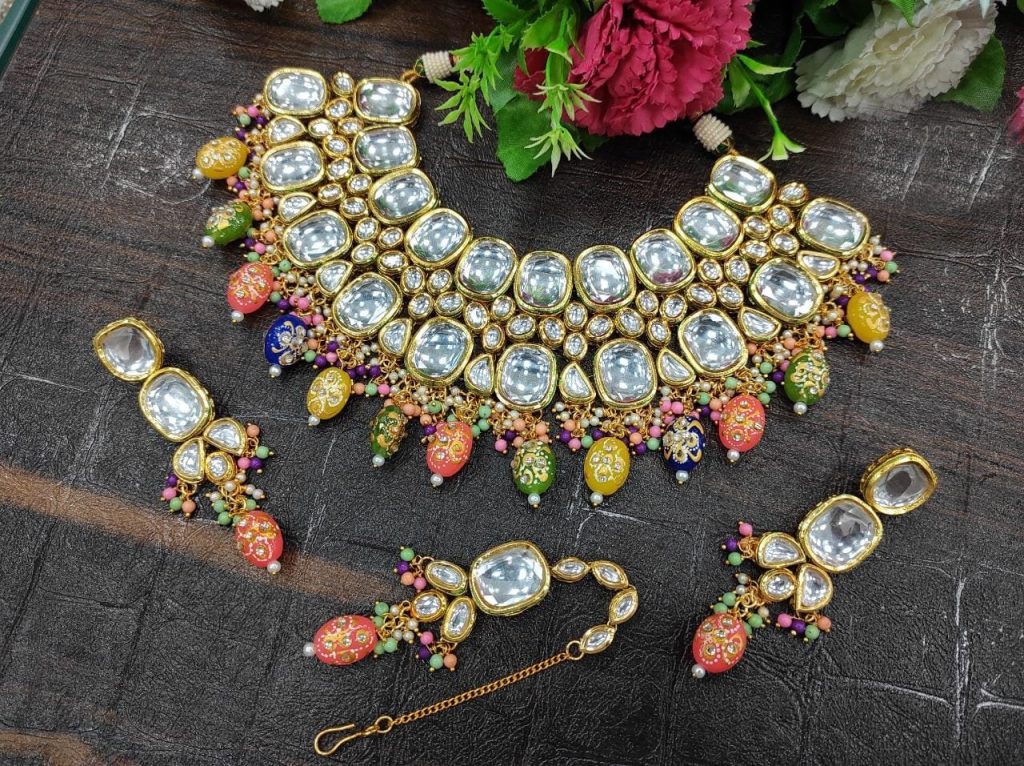

A Brief Overview of History
Meenakari jewelry was a type of indigenous jewelry that had its beginnings in Persia but was subsequently introduced to India by Mughal conquerors. Meenakari jewelry style started in Persia.
It was when Raja Man Singh of Mewar made the decision to wear it for his portraits and Darbar rituals that it first began to acquire popularity in India.
In the sixteenth century, when there was a spike in demand for Meenakari jewelry in both internal and international commerce, the marketplaces of Jaipur were a bustling hub of business activity. Craftsmen from Lahore were sent to India by Raja Man Singh of Mewar in order to meet the demand for Meenakari jewelry.
These craftsmen established their base in and around Jaipur, where they created designs that were appropriate for a wide range of budgets.
Gold has traditionally been used in meenakari art because of the higher potential it possesses to retain enamel. This preference dates back many decades.
Not only this, but the use of gold in meenakari artwork not only increases its gloss but also wonderfully brings out the colors of the enamels.
This is because gold is a reflective metal. Silver was eventually incorporated into the art of meenakari, and it was mostly employed to construct bowls, boxes, spoons, and other things used for decoration.
Copper was eventually incorporated to meenakari art when the Gold Control Act in India spurred Indian meenakars to search for other metals than gold to use in the production of jewelry and other works of art.
In the beginning, the meenakari method was used to assist the production of the popular stone-studded and kundan jewelry, which made it challenging for the artist’s works to gain broad attention.
The user is able to experience a variety of patterns inside the same piece of jewelry just by turning it over and wearing it in a different orientation, making the reversibility of this piece of jewelry the most exciting aspect about it.
In this article, we will discuss the history of Meenakari jewelry, as well as its many forms and patterns.
Origin and History of Meenakari Jewelry
Meenakari jewelry has its roots in the city of Jaipur, in the Indian state of Rajasthan. The Mughals, who were famed for their love of complex jewelry, are the ones who brought the method to Jaipur.
Jaipur is located in India. It is stated that the Mughals invited skilled craftsmen from Persia to India so that they could instruct local artisans in the technique of enamelling.
Meenakari jewelry was traditionally made from gold, but silver soon replaced it as the metal of choice owing to its lower cost. After the metal has been moulded into the proper shape, it is polished until it has a smooth surface.
The surface of the metal is next covered with a coating of enamel, which is followed by a firing in a kiln to bond the enamel to the metal and complete the process. This method is carried out several times until the colours and patterns that are wanted are accomplished.


Meenakari jewelry was traditionally manufactured for royalty and the affluent, and it was frequently presented as a gift on important occasions like as weddings and festivals.
Today, meenakari jewelry continues to be made for royalty and the wealthy. Meenakari jewelry is still worn by women on important occasions such as weddings and religious rituals, where it is seen as a symbol of wealth and rank as well as a way to express individuality.
Types of Meenakari Jewelry
Necklaces, bracelets, earrings, and rings are just few of the various varieties of jewelry that can be made using the meenakari technique. The following are some examples of the most well-liked kinds of Meenakari jewelry:
1. Kundan Meenakari Jewelry
Kundan Meenakari is a sort of Meenakari jewelry that is fashioned without the use of enamel and instead uses glass stones or Kundan.
After the stones have been mounted in gold or silver, the enamelling is completed all around the stones. This particular style of Meenakari jewelry is typically incredibly detailed and colourful, making it a popular option for brides to wear on their wedding day.
2. Jadau Meenakari Jewelry
An alternative to enamel used in Meenakari jewelry is uncut diamonds or Polki. Following the process of setting the diamonds in gold or silver, the enamelling is completed around the jewels.
This particular style of Meenakari jewellery is particularly popular for use in bridal ensembles since it is both incredibly detailed and bright.
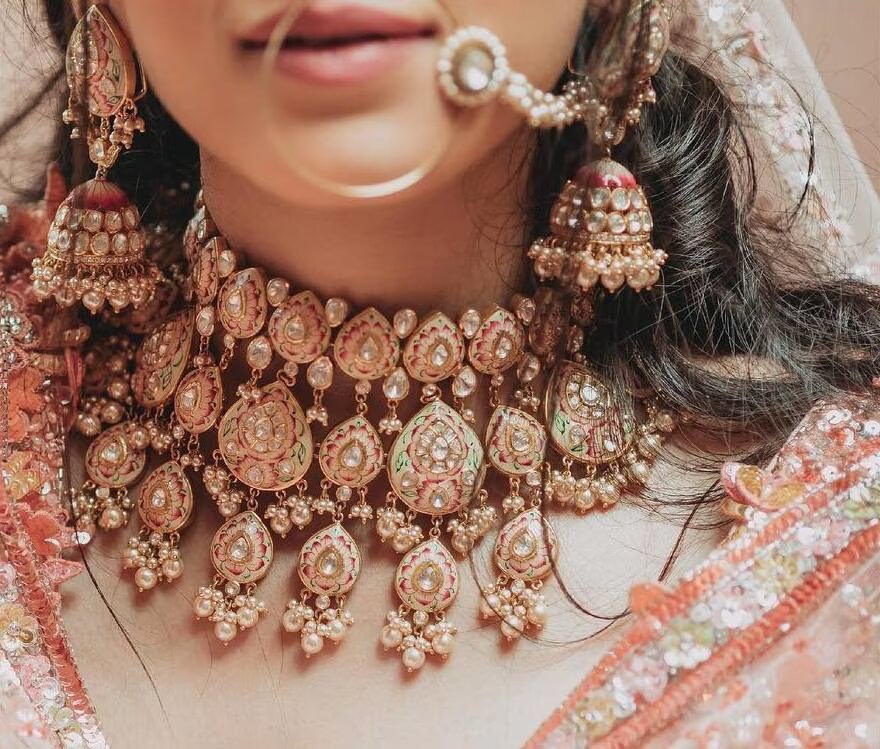

3. Minakari on Silver Jewelry
Also known as Minakari on silver jewelry is a sort of Meenakari jewelry that is crafted out of silver as opposed to gold.
After the silver has been molded into the required shape, the enameling process is carried out directly on the surface of the silver.
This style of Meenakari jewelry is commonly worn for everyday occasions, and its price is typically lower than that of Meenakari jewelry made of gold.
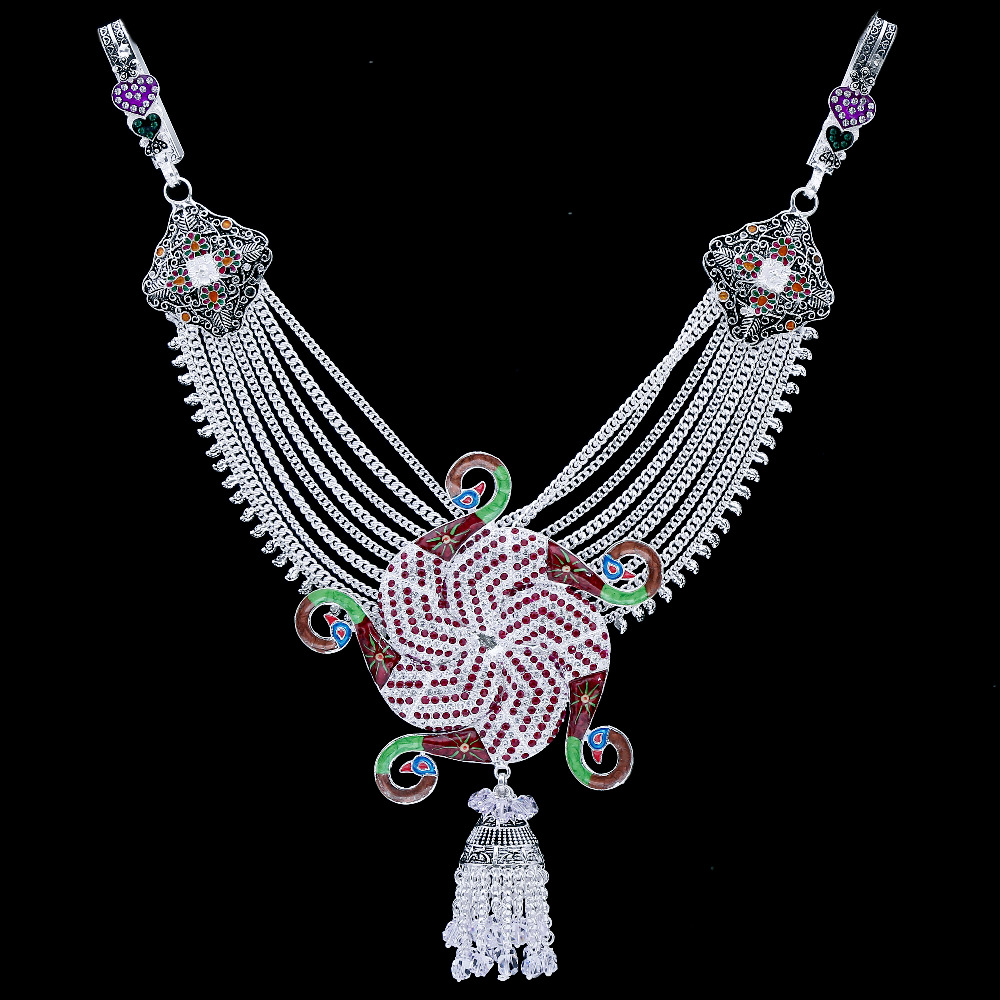

Check Out: Top 10 Signature Collection Meenakari Jewellery Designs We Can’t Get Over
4. Jewellery with Enamel on Gold
Jewellery with enamel on gold is a subcategory of Meenakari jewelry that is crafted using gold rather than silver.
The price of this sort of Meenakari jewelry is often more than the price of silver Meenakari jewelry, but it is frequently purchased for important events like weddings and religious rites due to its popularity.


5. Pachchikam Jewelry
The Meenakari jewelry known as Pachchikam is exclusive to the Gujarati city of Kutch. It is generally embellished with elaborate motifs and patterns, and the materials used to make it include silver and glass.
It is common practice to pair pachchikam jewellery, which is known for having an antique, earthy appearance, with traditional Indian clothing.
